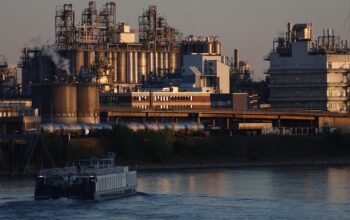In the ever-evolving landscape of engineering, innovative breakthroughs are continually reshaping our world. Here are some of the most exciting stories that highlight the incredible advancements happening around us:
Breakthrough Copper Alloy Achieves High-Temperature Performance
Researchers have recently developed a new copper alloy that performs exceptionally well at high temperatures. This material breakthrough could have significant implications in industries that require durable components capable of withstanding extreme heat conditions, such as aerospace and automotive.
Squirrel-Inspired Robots Leap Forward in Mobility
Engineers have designed a squirrel-inspired robot that can jump between branches with ease, borrowing from nature’s own parkour artists. This innovation showcases the potential for creating agile robots that can navigate complex environments like forests more effectively than ever before.
Recycled Cements Reduce Emissions While Maintaining Strength
A team of engineers has developed a method to recycle cement waste into a sustainable, low-carbon building material. This approach not only reduces emissions but also gives old construction materials a second life, highlighting a key step towards a more environmentally friendly construction industry.
New Security Protocols Protect Wireless Medical Implants
With the increasing reliance on wireless medical implants, engineers have created robust security protocols to protect these devices from cyber threats. This development ensures that critical medical technology remains safe and reliable for patients worldwide.
Students Unveil Future Technologies at Engineering Design Day
At the annual Engineering Design Day, students showcased a variety of innovative projects, from fusion research to space exploration and environmental conservation. These projects, like the Elephant Behavior Monitoring Collar and the Mars Ice Cubesat Expedition, demonstrate the creativity and potential of the next generation of engineers.
References:
- https://www.sciencedaily.com/news/matter_energy/engineering/
- https://www.engineering.com
- https://techxplore.com/engineering-news/
- https://www.baesystems.com/en/digital/feature/2025-our-top-5-emerging-tech-predictions
- https://www.sciencedaily.com/news/matter_energy/engineering_and_construction/
- https://www.sdsu.edu/news/2025/05/engineering-design-day-your-firsthand
- https://en.wikipedia.org/wiki/OpenAI
- https://kairostech.com/blog-list/the-future-of-software-quality-engineering-trends-driving-innovation-in-2025/



